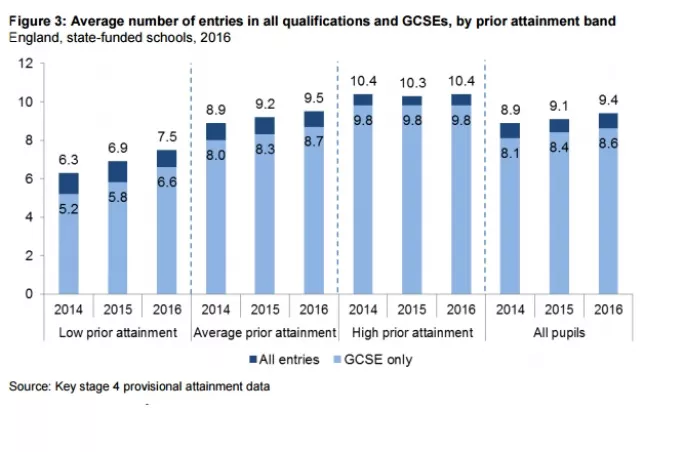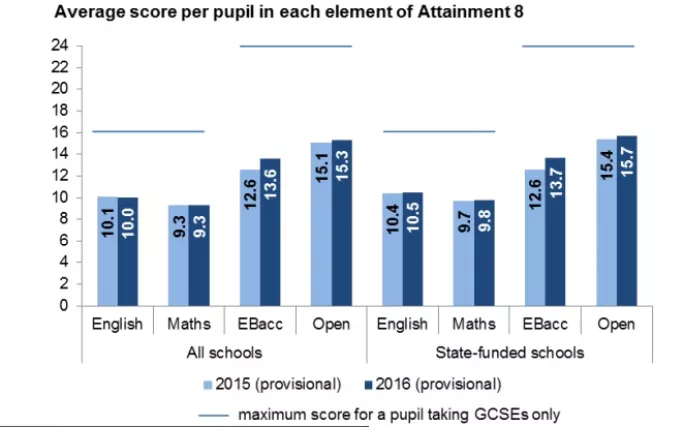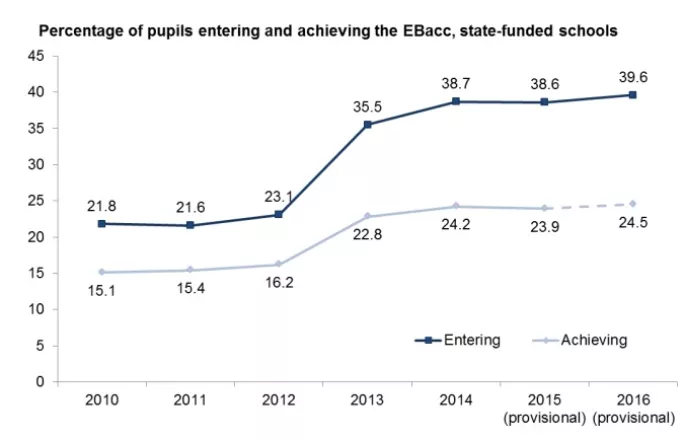1. Pupils with low prior attainment are entering more GCSEs
The average number of entries to GCSEs has increased for pupils with low prior attainment, from 5.2 in 2014 to 6.6 this year.
The government said it can only make comparisons back to 2014, because of reforms in how these measures are calculated.
Additionally, the figures show that GCSEs made up 88 per cent of all exam entries for pupils with low prior attainment this year, up from 83 per cent in 2014.
2. Grammar schools achieved the highest Progress 8 scores
The new accountability measure being used for the first time this year was devised to avoid giving schools with relatively low-ability intakes an inbuilt disadvantage.
But the new figures show that secondary modern schools still achieve lower Progress 8 scores - with an average score of -0.05.
Meanwhile, selective schools, on average, achieved a Progress 8 score of 0.33, while comprehensive schools achieved an average score of -0.01 - which is in line with the national average.
3. The number of pupils achieving under new accountability measure Attainment 8 is on the rise
The average score per pupil for Attainment 8 - the new raw attainment measure used to calculate Progress 8 - has increased by 1.6 points for all state schools, from 48.2 in 2015 to 49.8 in 2016.
The rise in this measure could be driven largely by behaviour change, the government suggests, with pupils entering more qualifications which count towards the English Baccalaureate.
4. Fewer pupils are sitting AS levels
The number of entries for AS levels has dropped by 17.8 per cent compared with 2015.
This trend is largely driven by the decoupling of 13 AS levels from A levels this year - where the AS no longer counts towards the full A level.
5. More pupils are entering EBacc subjects
The proportion of pupils entering and achieving the EBacc continues to increase, with 39.6 per cent of pupils in state schools entering the EBacc in 2016, compared with 38.6 per cent last year.
There were large increases in entries in EBacc science and humanities - but entries in EBacc languages dropped slightly from 49.3 per cent to 49 per cent.
Want to keep up with the latest education news and opinion? Follow TES on Twitter and like TES on Facebook







